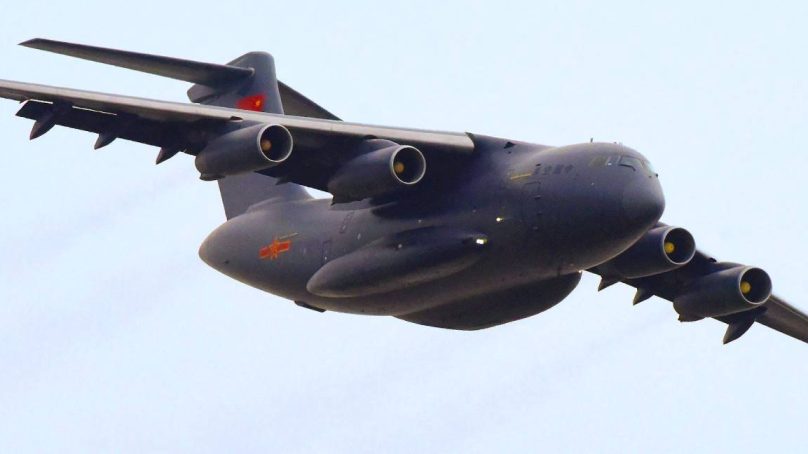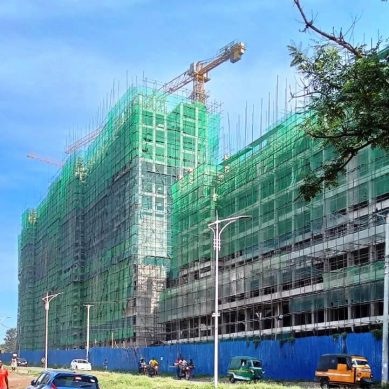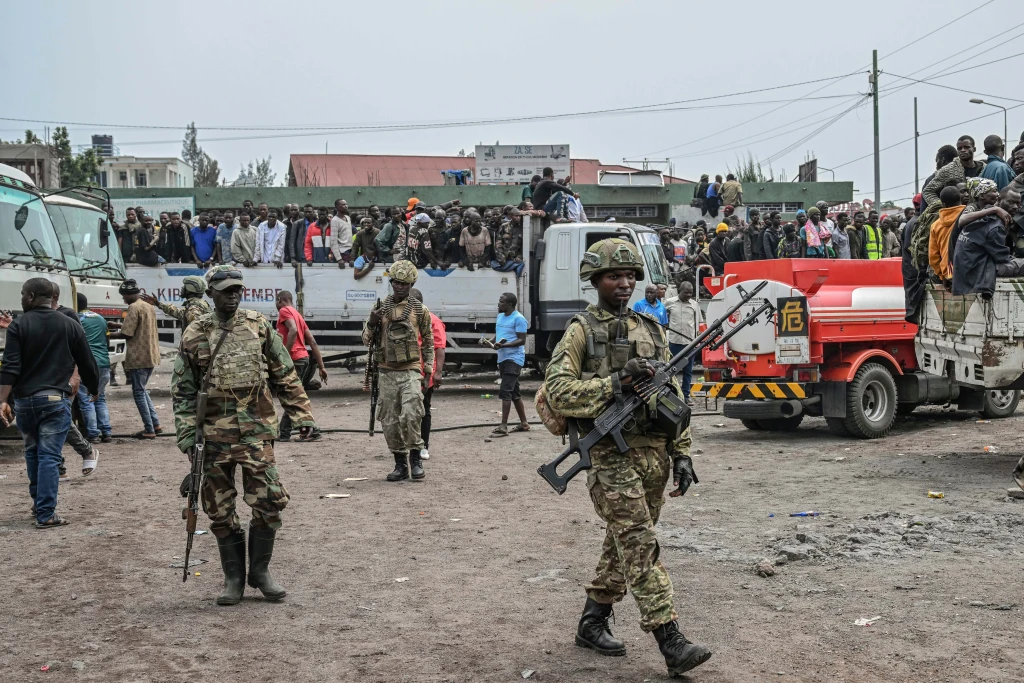
China’s two-week military exercises with Tanzania and Mozambique in July and August 2024 marked a significant expansion of People’s Liberation Army (PLA) engagement in Africa. The battalion-sized Chinese deployment (approximately 1,000 troops) conducted land- and sea-based training involving maritime patrols, search and rescue, and live-fire drills with their Tanzanian and Mozambican counterparts in exercises labelled “Peace Unity-2024.”
Some two dozen different types of weapons and equipment, including small arms, heavy artillery, micro unmanned aerial vehicles, and various reconnaissance and infantry vehicles were involved.
PLA ground, naval, air and marine forces participated. Troops and armaments from the PLA Joint Logistics Support Force, created to streamline the PLA’s expeditionary capacity, were featured for the first time as was the PLA’s Information Support Force.
Chinese troops were transported from mainland China in a variety of transportation vehicles, including navy and air force strategic lift assets like the Y-20 strategic transport aircraft and Yuzhao-class amphibious landing docks.
Peace Unity-2024 underscored Africa’s significance as a proving ground for PLA power projection, readiness and warfighting capabilities.
This was a first. In previous drills, PLA deployments were from its base in Djibouti or antipiracy patrols. The PLA exercise in Belarus prior to Peace Unity-2024 featured the same strategic air and sealift capabilities but the Tanzania drills represented a much longer deployment distance.
The sea phase entailed manoeuvres off the Mozambican coast. The land phase was held at the Chinese-built Comprehensive Training Centre in Mapinga, Tanzania. The overall exercise included unscripted opposing force elements, combined arms manoeuvres, and amphibious shore landings.
Peace Unity-2024 displayed the PLA’s improving ability to project infantry, armour, artillery and support units across vast distances. It also underscored Africa’s significance as a proving ground for PLA power projection, readiness, and warfighting capabilities.
China’s “Go Out” strategy (zouchuqu zhanlue) and “New Historic Missions” guidance (xin de li shi ming) have driven many changes in the PLA’s doctrine and subsequent modernisation. Enacted as a national strategy in 2000, Go Out, sometimes referred to as Go Global, is a Chinese state initiative to provide backing to state-owned enterprises (SOE) to relocate abroad and secure new markets and resources. It laid the foundation for Chinese-led initiatives like the Forum for China-Africa Cooperation (FOCAC), also created in 2000, and “One Belt One Road” (later renamed the Belt and Road Initiative for international audiences), established in 2012.
By 2017, over 10,000 Chinese firms – mostly SOEs – were operational in Africa. This includes 62 port projects and roughly $700-billion worth of debt-financed Belt and Road Initiative contracts between 2013 and 2023.
The security and geostrategic dimensions of this growing People’s Republic of China (PRC) footprint in Africa have widened PLA’s scenarios for strategy, doctrine, and training.
The New Historic Missions guidance issued in 2004 requires the PLA to “strengthen and defend Chinese overseas capabilities and interests.” This is codified in subsequent defence white papers: the “Diversified Employment of China’s Armed Forces” (2013), “China’s Military Strategy” (2015), and “China’s National Defence in the New Era” (2019).
The New Historic Missions is central to three military goals that China is prioritising through to 2030. The first is to defeat foreign forces’ access and manoeuvre in the western Pacific Ocean’s first and second island chains. These extend to the Yellow, East China and South China Seas, encircle the Kuril and Ryukyu archipelagos, Borneo, Japan, Taiwan, and the Philippines, and push into the Philippine Sea, and North Pacific.
The second is to improve China’s delivery of global public goods like peacekeeping, antipiracy, and disaster response—known by the PLA as “diversified tasks.” China once shunned them as open displays of Western dominance. It now embraces them as a means to project itself as a “responsible great power” (zeren daguo).
The third is to protect overseas interests and operational capabilities – such as infrastructure, energy, sea lanes and Chinese nationals overseas. The use of Chinese military and civilian assets to evacuate Chinese citizens from places like Ethiopia, Libya, South Sudan and Sudan are part of this goal.
China’s expanded African engagements follow its global ambitions. When FOCAC was launched in 2000, China had no peacekeepers in Africa and lagged far behind the United States and Europe in the training of African students, civilian and military professionals. Chinese security assistance was non-existent, and China was absent in African security debates.
Today, the PLA’s largest overseas deployment is in Africa. It maintains continuous naval flotillas, has more troops in United Nations missions than any other permanent UN Security Council member and, besides France, trains more African students. It also instructs more African civilian, military, and law enforcement professionals.
While initially a trade-oriented initiative, FOCAC has increasingly taken on military dimensions. The military training quotas, credits for military sales, and peacekeeping and counterterrorism capacity-building come from FOCAC allocations. FOCAC also hosts regular security dialogues like the China-Africa Peace and Security Forum and the China-Africa Police and Law Enforcement Forum. It operates a fund for the African Union’s Africa Standby Force, and promotes Chinese security norms like the Global Security Initiative.
The PLA’s growing involvement in FOCAC speaks to the militarisation of certain aspects of China’s Africa policy. The same is true of China’s other regional mechanisms like the China-Arab States Cooperation Forum (CASCF) and the Forum of China and Community of Latin American and Caribbean States (China-CELAC), which also developed military programs over time, modelling FOCAC.
China’s armed forces have conducted 19 military exercises, 44 naval port calls, and 276 senior defence exchanges in Africa since 2000, as tabulated by the database of the Centre for the Study of Chinese Military Affairs at the US National Defence University. It has also deployed 24 military and civilian medical teams on 1-2 year rotations in over 48 countries.
Initially, the military content of China’s exercises was low, focusing on political signalling, military diplomacy, and orientation to Africa’s security landscape. “Peace Angel,” China’s first drill on the continent held in June 2009 with Gabon on humanitarian medical evacuation, illustrates this light footprint.
A step up in engagements came in 2014 with exercises in Nigeria (May), Namibia (June) and Cameroon (July), focusing on fleet formation, antipiracy and rescue operations. Each occurred alongside port calls by the PLA Navy’s 16th Escort Task Group (ETG).
A higher tempo of drills occurred thereafter. One example is “Beyond 2014,” a month-long exercise in October 2014, between Chinese and Tanzanian marines on the high seas. Over 100 PLA marines deployed for this drill, the largest at the time.
Much of the infrastructure China is using to expand its military footprint in Africa was built up over time.
Another evolutionary step was the four-day drill by the PLA Navy’s 22nd ETG and South African Navy in May 2016, focused on warfighting. The PRC deployed the Type 052 guided-missile destroyer Qingdao, Type 054A frigate Daqing, and Type 903A replenishment ship Taihu for the exercises.
South Africa deployed the frigate SAS Amatola and submarine SAS Manthatisi. This was the fourth time South Africa received a PLA Navy ETG, but the first time they trained at sea. To underscore the significance, the then-commander of the PLA Navy, Admiral Wu Shengli, observed the drill along with his counterpart.
- An Africa Centre for Strategic Studies report







